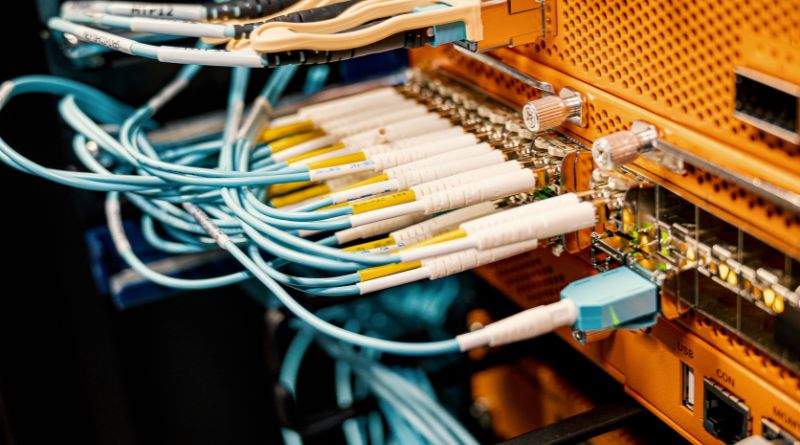Understanding the Basics of Structured Cabling Systems
When a data cabling company designs a structured wiring system, they follow ANSI/TIA standards for electrical transmission, resistance, cable lengths, and connectors. This simplifies installation and troubleshooting.
Entrance facilities, equipment rooms (or wiring closets), and telecommunications rooms are where the backbone cabling connects to horizontal components. Then, the cables run to work areas for end-user connections.
What is a Structured Cabling System?
Well-designed structured cabling systems are a complete wiring infrastructure that provides a network with the data it needs. It differs from the previous point-to-point cabling methodology, which connected each device to its cable. Instead, structured cabling solutions organize networking cables into six different subsystems. These include patch panels, switches, and trunk cables which all work together to create a complete wiring infrastructure. It also makes it easier to troubleshoot issues when something goes wrong with the hardware, as the cables are labeled and color-coded.
A properly planned structured cabling solution provides an organized network with a high-bandwidth capability to serve multiple applications. It also allows for redundancy and future-proofs of the system’s usability. It should be able to accommodate changes, additions, and relocation with minimal effort.
Structured cabling systems are also more efficient to maintain than ad-hoc networks. This is especially important for educational institutions, where technology can often be found everywhere, and employees use it constantly.
The more devices, access points, and users you have, your network will need more scalable. Investing in structured cabling services at the beginning can save you money and time in the long run, as it will allow your business to grow rapidly. You’ll be able to easily add new hardware, software, and more without the headache of dealing with an unorganized wired network.
Why Do I Need a Structured Cabling System?
In today’s world, companies rely more on technology than ever before. That’s why a structured cabling system is essential to any modern business. It streamlines and organizes a company’s digital infrastructure to save space and make adding or changing hardware easier.
Structured wiring standards help prevent tangled cables by keeping everything organized and flexible. Each port on a piece of hardware is connected to a patch panel, which connects to a trunk in the MDA (Main Distribution Area). The MDA serves as a hub for all the telecommunications devices in an office and allows for easy MACs (Moves, Adds, or Changes) with short-length patch cords.
A structured cabling system also helps you avoid problems like network crashes or slow speeds. These problems can be caused by bad wiring, but with a system in place, they are less likely to affect all your workstations and are easier to troubleshoot.
Think of it like your home electrical wiring. Most electricians use a system that keeps every outlet and breaker labeled, making it easy to identify which one needs to be turned off when an outage occurs. A structured cabling system does the same for telecommunications in commercial office spaces. This ensures that you’re always provided with service and makes resolving any problems when they arise much easier.
How Do I Get Started with a Structured Cabling System?
The best way to get started with a structured cabling system is to find an IT consulting partner to help you determine your current and future network needs. They can then design a system that will meet those needs while also making it easier to upgrade and troubleshoot in the future.
Structured cabling systems consist of a telecommunications infrastructure with patch panels, trunks, and connectors to connect devices to your network. It is designed to create a “structure” for your organization’s digital infrastructure with a main distribution area (MDA). From there, all the MACs (Moves, Adds, and Changes) are made with short-length patch cords. The cables can run horizontally across your facility or vertically between floors and into equipment cabinets.
It is important to know the rules and regulations of your industry before getting started with a structured cabling system. There may be restrictions on what type of cable you can use, whether plenum or non-plenum and what kind of conduit is required. It is also important to consider the bandwidth you need for your business.
Think about the electrical wiring in your home – most electricians label each breaker on the main panel and then each subpanel that connects to outlets. That makes it easy for someone to find and replace a blown fuse or an overheated outlet. It is the same for structured data wiring – when you get a well-designed structured cabling system, it will be easy to identify each end-point and make changes. This will result in optimized performance for your network, making future upgrades less expensive and time-consuming.
What Are the Benefits of a Structured Cabling System?
Modern business relies on effective telecommunications systems to transfer critical data all around the globe. A structured cabling system makes these communications systems workable and reliable to prevent errors & corruption that can cause costly downtime for businesses.
Structured cabling also offers some benefits in terms of aesthetics. No one wants to walk into a company and see bundles of unorganized phone cords, Ethernet cords, or coaxial cables slithering across the floor or along the walls and ceiling. With a structured cabling system, these wires and cables fit into the walls, beneath the floors, or within the ceiling to ensure they’re hidden. The result is a clean and organized space that makes it easy for employees, users, and clients to identify issues if they occur.
The flexibility of a structured cabling system is another great benefit. It’s easily able to accommodate new changes, additions, or moves. It can also be upgraded without causing too many interruptions or requiring a costly network overhaul. This kind of flexibility is important for companies that are preparing to grow.
Modern structured cabling also offers a variety of other features that can help with business operations and management. It can provide VoIP software that allows you to host remote business meetings and support surveillance camera systems for security purposes.




